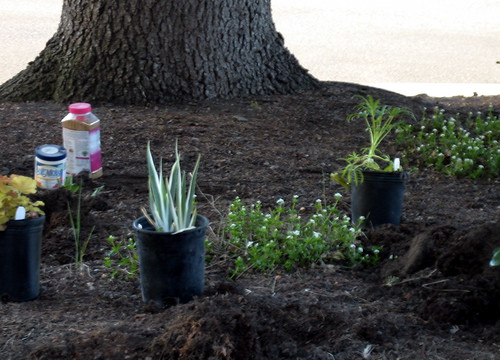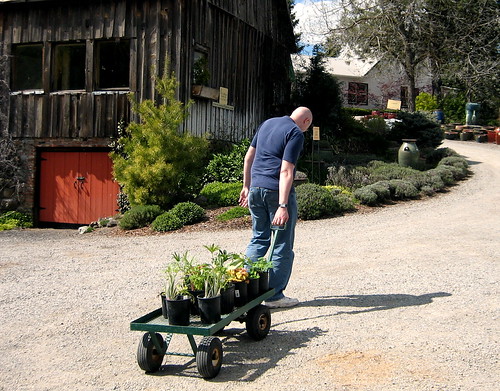
The tree thrived, as they sometimes do in adverse conditions. It shades our house in the summer, and shields our front windows from the headlights of cars driving up the hill. But now experts have opinions about our tree. These experts call it dangerous. If it fell, it could hit our house. Or it could fall in the street and kill someone. It could even hit the power lines across the street, blow the transformer, and end up causing a blackout on the entire South Side.
These experts, to a one, think we should cut the tree down.
The tree is healthy, though. It lived through the ice storm of ten years ago, and the high winds last fall, with no damage.
But the tree does cause problems. It's a water pig. We don't get a lot of rain here - about 18 inches a year. The tree gleefully sucks down every drop. The grass in the front lawn struggles. The hostas I planted under the tree came up for four years in a row, but smaller and smaller each year. One didn't come up at all this spring, and the other two have become dwarf hostas. My front yard is becoming an unattractive wasteland.
Ha! say the experts. Now you really should cut it down!
So now I'm at war with the tree.
First, I had a long chat with the owner of Tower Perennial Gardens about planting in dry shade. I bought Dicentra eximia, Pulmonaria 'Diana Clare', Helleborus orientalis and foetidus, Heuchera 'Marmalade' and 'Caramel', Iris pallida 'Variegata', Epimedium colchicum, and Asarum europaeum.

Before I planted them, I filled each hole with a mixture of composted steer manure, Osmocote, and SoilMoist. These plants are entering a hostile environment - the least I can do is make sure they're properly protected. Finally, I watered each plant in with a dilute solution of rooting hormone. Then the whole bed was spread with a mulch of organic compost, and then a layer of bark to keep as much moisture in place as possible. Finally, fertilizer stakes formulated for evergreen trees were pushed into the ground at the tree's dripline. This should compensate for disturbing the shallow roots while we were digging in the new plants.
We'll have to step up the watering schedule under the tree this summer, and possibly next summer too, until the plants are established. It means a higher water bill, and economizing on other things. But the small sacrifices now will mean that our tree "war" might be won, without hurting or killing the tree.



4 comments:
Hooray for you guys! I'm such a fan of xeriscaping -- even when the "environment" is just one created by a greedy tree -- and I can't wait to see pictures of the area as it grows.
Looking at the picture of your house back in the 20s, I wonder if you might remove the tree on aesthetic grounds. Without the tree you have an elegant house perched on a small rise. With the tree, you have a squat house hiding behind a large tree, at least when seen from the front.
I wonder if its value as timber would help offset the removal cost...
Yes, but the street is much busier than it was back in the 20s. Aesthetically, we would present a much more pleasing view to the street but practically, it would be like living on a parade float.
Elbow, elbow, wrist-wrist-wrist
Elbow, elbow, wrist-wrist-wrist!
Post a Comment